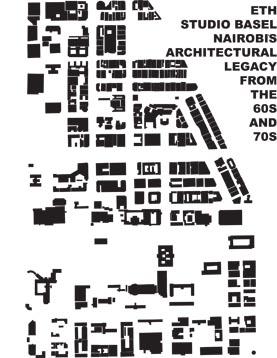Nairobi’s Architectural Legacy from the 1960s and 70s

Students: Jeannine Roschi, Daniel Klos
Location: Group work in Nairobi
Date: December, 2007
Type: Research project, student work, Nairobi’s Architectural Legacy
During the 1960s and 1970s, the Nairobi Central Business District experienced a substantial building boom. Especially, a large number of office buildings and governmental buildings were built during this phase. These buildings often exhibit a very high quality of architectural design on an international level. Typical of this period, most buildings are built as concrete structures, experimenting with structural facades, concrete lattice work and louvers, and expressionistic structural elements such as columns and beams. A paradicmatic example of this phase is the Kenyatta Conference Center (KCC), which occupies a primary site in the inner city, just next to the City Hall and the Parliament Building.
The building boom coincides with the era of independence. It was at that time, that a number of government offices and ministries had to be constructed, and that the country experienced a economical boom, leading to the construction of many office buildings. Even though just having gained independence, none of the buildings were built by (African) Kenyan architects. Either lacking the architectural education or the necessary connections to secure any of these contracts, native Kenyans were left out of this defining phase of their own country. Even the KCC, which was specifically initiated by Kenya’s first president Kenyatta as a symbol of independent Kenya, was built by a foreign architect. The building phase therefore holds a very ambiguous relationship to the Nairobi population in general, and to the local architectural scene in specific.
Download the Book PDF

